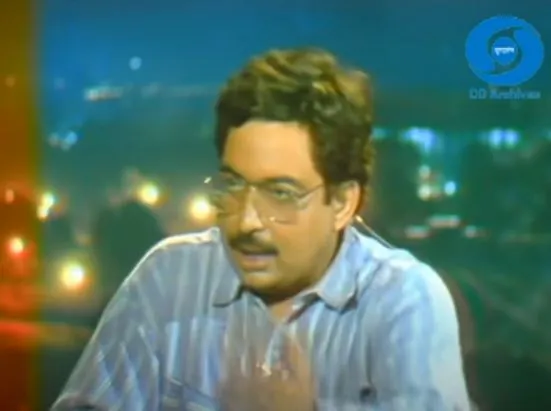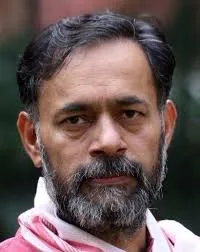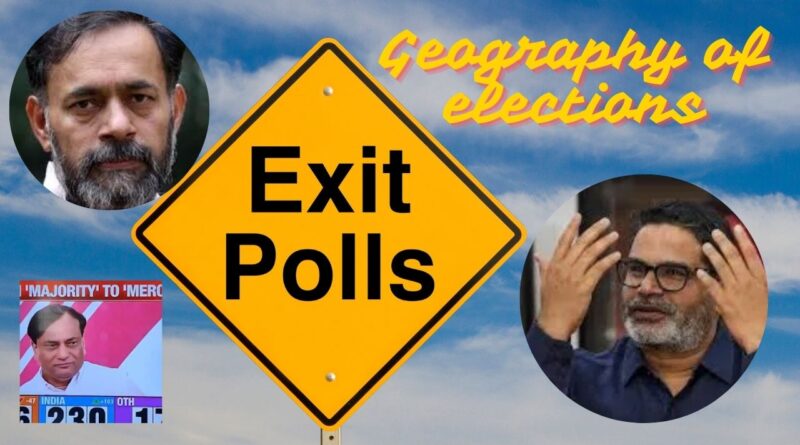Geography Means Business! Stop Crying & Pay Attention
As a student and teacher of Political Geography, I found it disturbing to see the CMD of one company that conducts exit polls (and market surveys) crying on a live TV show. I am a firm believer that “boys should cry”. But you must be guessing why was concerned? What does political geography have to do with him crying on a live TV show?
So, let me explain: Poll Surveys and Electoral Research are integral parts of the subject of which I have been a student for over 20 years. Many of you might not be aware that electoral geography is a sub-discipline of Political Geography, and it is a very well-developed and popular subject in the United States. In fact, the pioneer of electoral geography in India was Late Prof. C.P. Singh. During my conversation with one of the alumni of the Department of Geography, University of Delhi who is no more, Dr Venu Mehta, told me that in the nineties, Geography Students from the Department used to contribute maps, charts and other materials to Vinod Dua and Dr Pranoy Roy in their electoral analysis on the Doordarshan.

Once, during our conversation at the JP Tea Stall at the Delhi School of Economics, Prof. K.K. Majumdar revealed that it was Prof. C.P. Singh who helped and provided ideas to Dr Yogendra Yadav in understanding electoral geography.

Dr. Yogendra Yadav (Source: WEF)
However, we should credit Dr Yogendra Yadav for taking electoral geography from the geography department library and lanes of the Delhi School of Economics to the Television Studios of Noida. In fact, Rajdeep Sardesai and Dr. Yogendra Yadav glamorised electoral analysis. Prof. Barkatullah Khan (Ex-Head of Geography, DSE) promoted the discipline, but his approach was strictly academic. In due course, the field was hijacked by Political scientists.
Why Hijacked?
Because the tools and concepts used in such studies are purely geographical in nature — for example, Maps, Data, Region, and Socio-cultural Aspects. The names of the regions, such as Awadh, Bhojpur, Vidharbha, Malwa, Tirhut etc., are geographical regions. It was Prof. Deshpande, C.D., who produced the socio-cultural region map of India. Later, it was elaborated by Mamoria, Mandal, Hussain, Tiwari, etc. I request my political scientist friends to please not get agitated here, as we geographers admire the exchange of ideas. We do not mind people of other disciplines taking forward the legacy of geography. So Relax!
Exit Polls — What went wrong?
Though the current mercenaries who are running or conducting Exit Polls are neither Geographers nor Political scientists, They are relying on data provided by someone sitting at home (off-course from constituencies) or generated by an Artificial Intelligence (by one click) or some underpaid, ill-trained person working on his/her whims and fancies.

They needed to remember the key principles of electoral geography, i.e. Ground Truthing. When you have to visit the field, check the ground realities, and talk to the “real people”, it can only come by staying there for a longer period to develop a good rapport with the community. I remember our Prof (Dr.) R.B. Singh always used to say in his classes, “Think globally, act locally.” Acting locally is equally important as thinking globally. It implies that to understand the realities, the researcher has to visit the field (local areas). They (exit poll companies and poll gurus) also need to consult on how to incorporate the geography factor and undertake some political geography lessons. Unless and until (these pollsters) learn how Region A is different from Region B, how can they reach any meaningful conclusions?
Expert Intervention Matters
Above all, the final data that comes from the field needs some moderation since it is based on random sampling, and biases may creep in. Senior Journalist Prabhu Chawla pointed out during the same discussion that he used to verify with his team of experts and then release the data.
Therefore, my suggestion to the gentleman who was crying is to make the following changes:
- Hire good researchers with political geography and political science background.
- Incorporate “Ground Truthing”
- Make your data collection rigorous and scientific.
- Add expert opinion and moderation.
- Correlate the data with other socio-economic indicators.
It is a wake-up call for all the geographers involved in the decision-making process regarding the subject in India to provide the legitimate space to political and electoral geography that it deserves. It is also the responsibility of the Departments to upgrade the courses. Bring in technology, but remember to send people to the ground (actual space).
Because Political Geography Matters!
